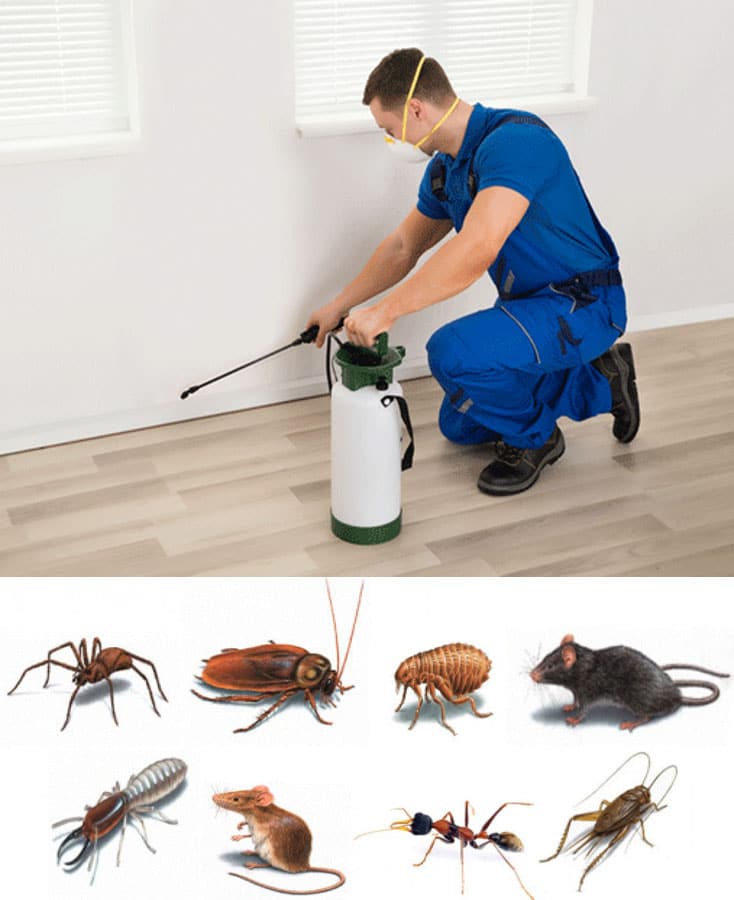A1 Bed Bug Exterminator Charlotte - Specialized Bed Bug Removal
A1 Bed Bug Exterminator Charlotte - Specialized Bed Bug Removal
Blog Article
Bed Insect Treatment Failure: Comparing Chemical Vs. Non-Chemical Solutions
In the world of insect control, particularly when taking care of the persistent concern of bed bugs, the option between chemical and non-chemical therapy remedies can be a critical one. Both strategies use distinctive benefits and disadvantages, influencing factors such as effectiveness, safety and security considerations, and general price. By analyzing the nuanced information of each method, a more clear understanding of which path to seek in resolving a bed bug problem can be achieved.
Effectiveness of Chemical Therapies
Chemical treatments for bed insect invasions have actually been widely acknowledged for their powerful and fast efficiency in getting rid of these parasites. When thinking about the performance of chemical treatments, it is important to recognize that they can provide a complete and fast solution to a bed bug problem. Specialist pest control men often rely upon pesticides to target bed bugs at different stages of their life process, consisting of fairies, eggs, and adults. These chemicals usually function by disrupting the bed insects' nerve system, causing paralysis and ultimate death.
In addition, chemical therapies have the benefit of offering residual results, suggesting that they can continue to remove bed insects even after the initial application. This residual action is especially useful in combating any kind of potential re-infestations. Furthermore, the fast activity of chemical therapies can bring alleviation to people dealing with serious bed bug problems, allowing them to regain control of their living rooms rapidly.
Safety Worry About Chemical Solutions
One critical aspect that calls for mindful factor to consider when utilizing chemical services for bed pest therapy is making sure the security of occupants and the environment. While chemical therapies can be effective in eradicating bed insects, they might posture threats if not managed effectively. Among the primary security interest in chemical remedies is the potential injury they can cause to human health. Direct exposure to certain chemicals utilized in bed pest therapies can result in respiratory system concerns, skin inflammation, or other damaging reactions, particularly in people with pre-existing problems or sensitivities. In addition, improper application or dosage of chemical pesticides can cause toxic deposits remaining in the cured area, posturing lasting wellness dangers to owners.
In addition, the environmental effect of chemical services is another considerable factor to consider. Some pesticides used in bed insect treatments might be unsafe to useful insects, wild animals, and ecological communities if they seep right into the soil or water supply. It is vital to make use of chemical treatments judiciously, adhering to safety and security guidelines, and thinking about less toxic alternatives to paste control reduce these dangers and guarantee the effective and risk-free management of bed insect problems.
Advantages of Non-Chemical Techniques
Considering the possible safety and security concerns and ecological impact linked with chemical remedies for bed insect therapy, checking out non-chemical approaches presents an encouraging choice with several distinct advantages. Non-chemical therapies are eco pleasant, as they do not add to air or water contamination, making them a lasting choice for pest control.
Furthermore, non-chemical options can be reliable in targeting bed pests, consisting of hard-to-reach areas where chemical treatments may not permeate. Methods such as warmth therapy, vacuuming, vapor cleansing, and cushion encasements offer detailed eradication without making use of harmful chemicals. In addition, non-chemical strategies can be much less disruptive, needing minimal preparation and enabling quicker reentry into dealt with areas. Generally, choosing non-chemical bed bug treatment techniques not only focuses on security and ecological security but likewise guarantees reliable and comprehensive parasite control.
Limitations of Non-Chemical Treatments

Additionally, non-chemical therapies commonly need numerous applications to attain effective anchor removal. This can be taxing and may not always ensure full removal of all bed insects and their eggs, especially in hard-to-reach or surprise areas.
Moreover, the success of non-chemical treatments greatly counts on appropriate implementation and thoroughness, which can be testing for people without expert competence. Poor application of non-chemical approaches might cause insufficient elimination, bring about persistent problems and the need for added therapies.
As a result, while non-chemical therapies have their benefits, it is necessary to acknowledge these restrictions and consider them when determining the most efficient technique for taking care of bed pest infestations.
Expense Contrast: Chemical Vs. Non-Chemical Options
Given the limitations linked with non-chemical treatments, a crucial aspect to assess in the context of bed pest administration is the price comparison in between chemical and non-chemical choices. In contrast, non-chemical therapies like warmth therapy or steam can be a lot more pricey, with costs varying from $1,000 to $6,000 for a whole home. While the initial expense of chemical therapies may appear lower, numerous therapies may be called for to completely eliminate the problem, potentially boosting the total price.
Final Thought

Taking into consideration the potential security concerns and environmental effect linked with chemical solutions for bed insect therapy, exploring non-chemical methods offers an appealing choice with several unique advantages.Offered the restrictions associated with non-chemical treatments, an essential element to examine in the context of bed pest administration is the cost comparison in between chemical and non-chemical choices. In comparison, non-chemical treatments like warm treatment or vapor can be much more costly, with expenses varying from $1,000 to $6,000 for an entire home. While the preliminary price of chemical treatments may seem reduced, several treatments might be called for to completely get rid of the infestation, possibly boosting the total price.In verdict, when comparing chemical and non-chemical bed insect therapy choices, it is important to take into consideration performance, safety, benefits, restrictions, and cost.
Report this page